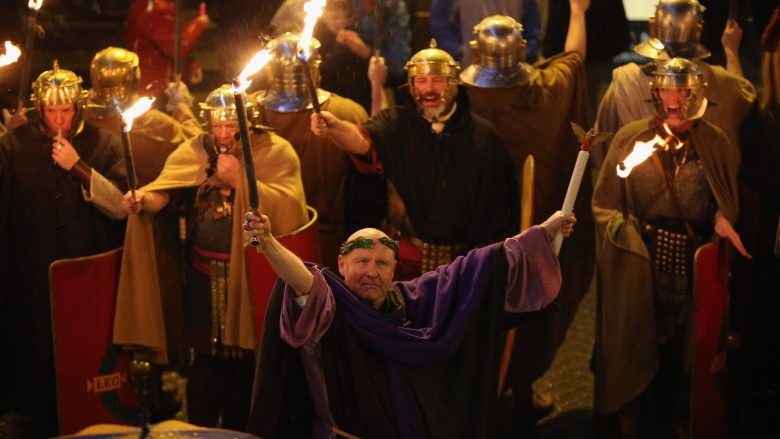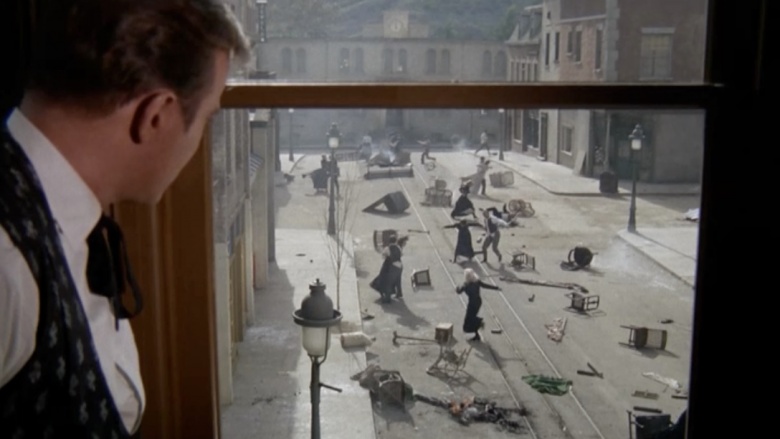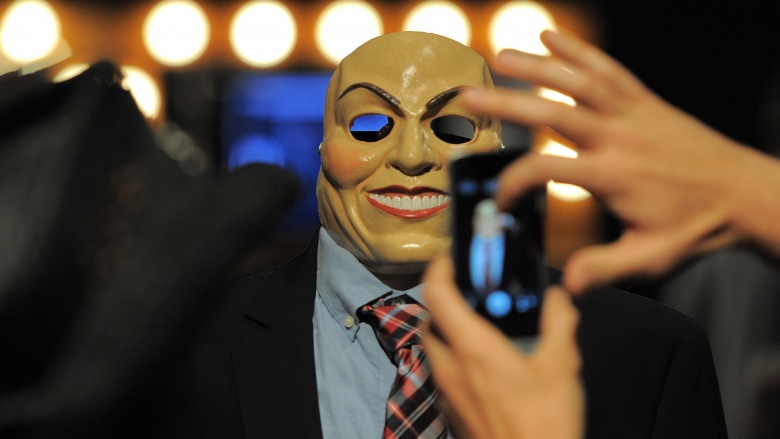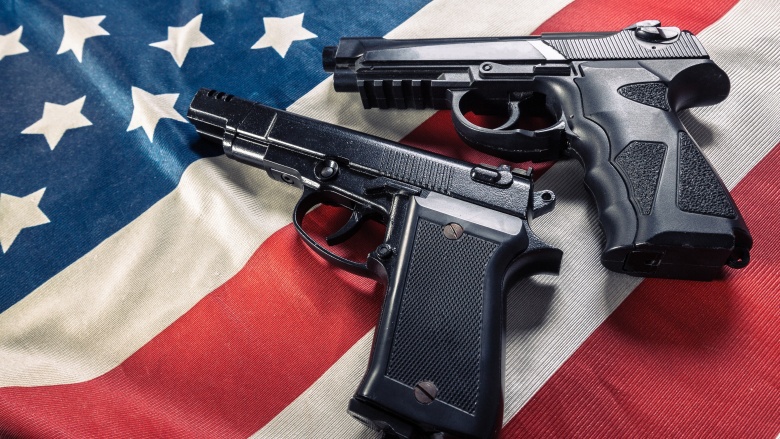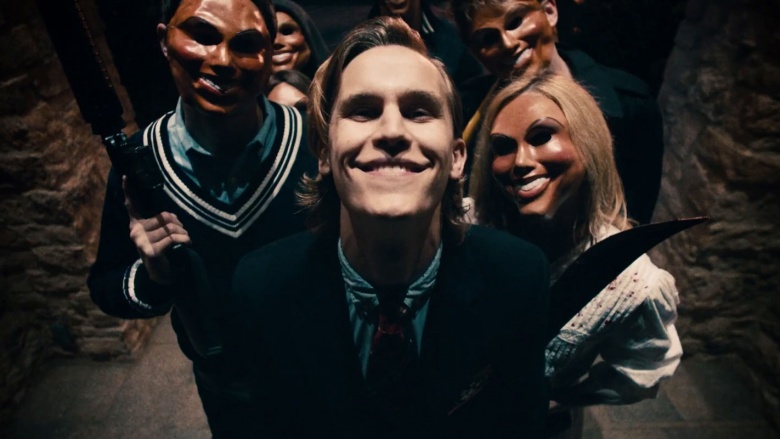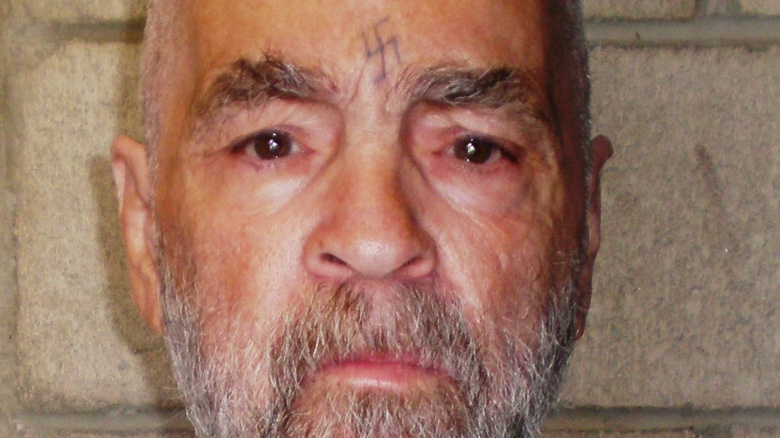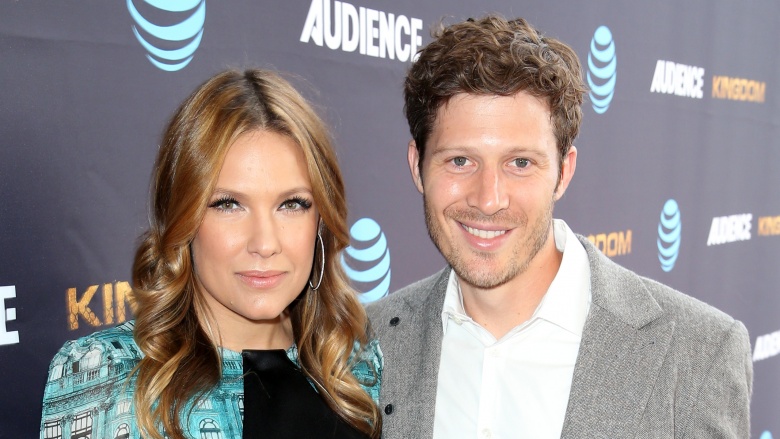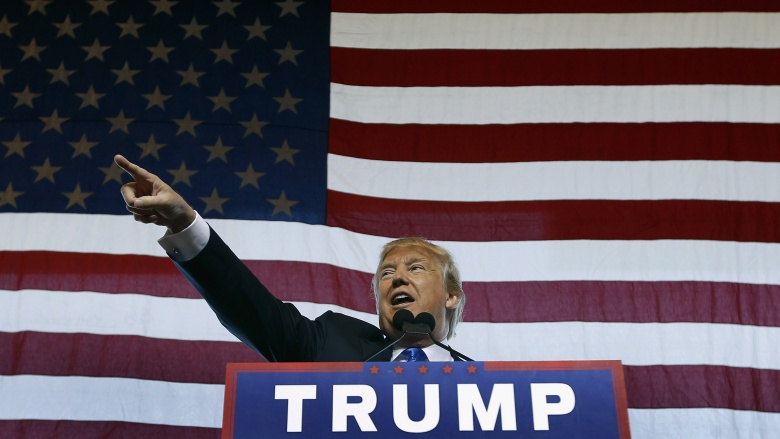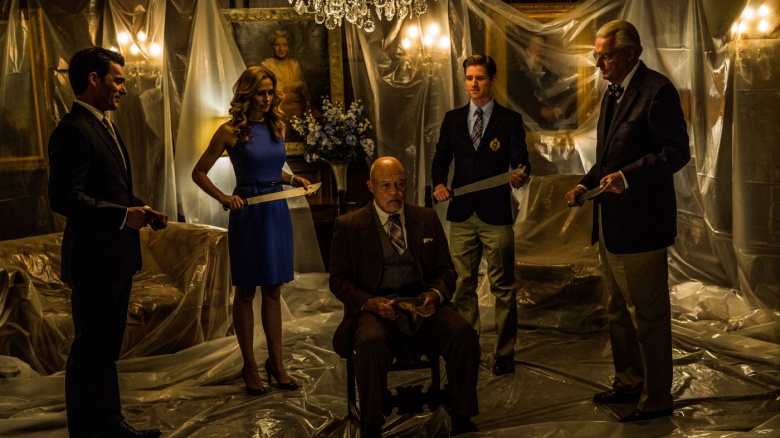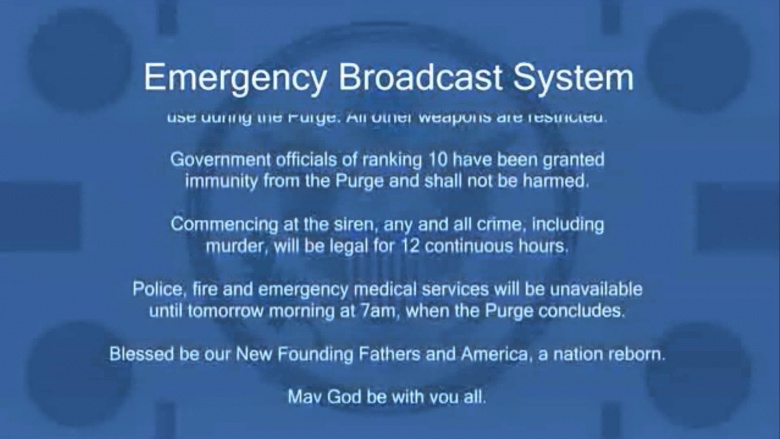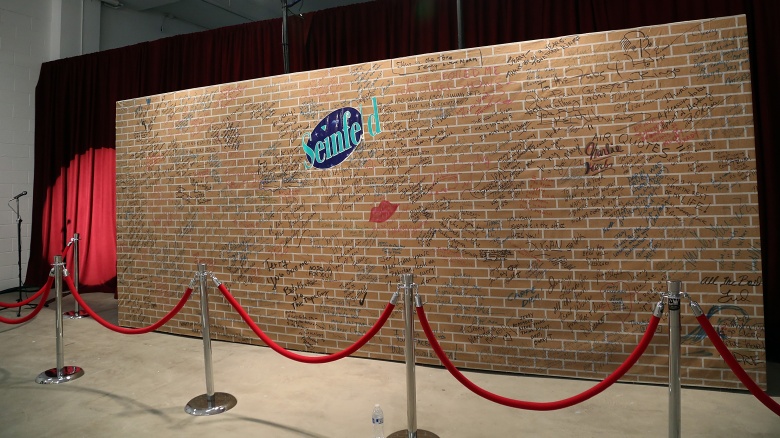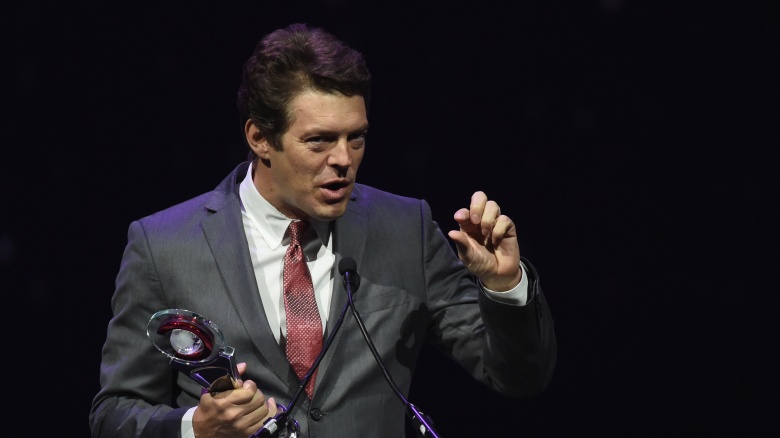The Untold Truth Of The Purge
James DeMonaco's The Purge has evolved from low-budget home invasion horror to a politically charged survival franchise over the course of three feature films, thanks in no small part to the writer/director's fruitful partnership with producer Jason Blum and his Blumhouse imprint, with whose backing DeMonaco was able to create a convincing vision of his dystopian hellscape on a modest budget. The Purge only hit cinemas as recently as 2013, but the impact of that film and subsequent sequels The Purge: Anarchy and The Purge: Election Year has seen the concept of the Purge find a place in popular culture, parodied and referenced across different mediums and understood as a term that means lawless carnage. Where did DeMonaco's idea of a mass culling come from—and, perhaps more importantly for fans of the franchise, where is the series going? From its roots in modern day violence to its brush with real-life politics, this is the untold truth of The Purge.
It actually used to happen
The first question on most people's minds after watching a Purge movie is "what would happen if they really did that?" The answer can be found in historical records dating back to the time of the Roman Pagans, who celebrated a festival called Saturnalia, a weeklong period of lawlessness and debauchery that allowed citizens to do whatever the hell they wanted between the 17th and 25th of December. This precursor to Christmas encouraged people to get intoxicated and act out their desires without fear of retribution, which often led to widespread vandalism and violence, as well as rape and murder.
As the purpose was to show the masses what life would be like without the rule of law. Roman courts were closed for the duration of the festivities, meaning that you either took part in them or you were on your own. DeMonaco's films draw multiple parallels with the ancient holiday's customs, one of which involved choosing a victim to be pushed to the brink of overindulgence. The unlucky person would be fed like a King or Queen during the day and offered more physical pleasures in the evening, and at the festival's conclusion they would be slaughtered by the authorities, who believed that in doing so they were destroying the forces of darkness and greed.
Star Trek did the idea first
When DeMonaco first came up with the idea for The Purge, he decided to run it by his dad, who immediately pointed him in the direction of a Star Trek episode entitled "Return of the Archons." The Original Series episode follows Captain James T. Kirk and the crew of the Starship Enterprise as they attempt to lend a hand on a planet whose people are dictated by an artificially intelligent authoritarian computer system. Every day at 6PM (which the populace begin to refer to as "the Red Hour"), the computer goes down and the people let out all their pent-up frustrations on each other, fighting, raping, and killing. The writer/director of the narratively similar Purge movies is well aware of the resemblances between this classic episode (the first in which the Prime Directive of not interfering with the internal development of alien civilizations is mentioned) and his trilogy, though he doesn't seem to mind them being mentioned in the same sentence. "I'm happy people are picking up on it," DeMonaco said, "I hope people see the parallel."
It inspired a real-life killing spree
Indiana teen Jonathan Cruz was taken into custody in May 2016 after he and a female patron got into argument at a Wendy's and he decided to kidnap her, forcing the terrified woman to drive him and his friends around for the evening. It was only after police arrested him that they began to suspect he was behind a recent series of murders. An examination of the 19-year-old's cellphone revealed a series of incriminating messages sent to his girlfriend, one of which allegedly read "U better go on Face book and watch da videos of me shooting people. I Purge every night now."
Officers quickly linked Cruz with the murders of 54-year-old Billy Boyd, 40-year-old Jay Higginbotham and 44-year-old Jose Ruiz, who were each gunned down in cold blood over a three-day period earlier that month. Prosecutor Terry Curry argued for capital punishment and filed a death penalty request with the courts, hoping they would agree to execute the suspected drug dealer and gang member. Curry told reporters that the killings were "beyond senseless. Quite simply, we allege that these were killings for sport."
DeMonaco has a fear of guns
When you consider the high levels of bloodshed needed to bring his dystopian vision for America to the big screen, it might seem odd that writer/director James DeMonaco has a fear of firearms, but the gun violence that seems to grip the US every other week was actually one of the reasons he wanted to make the Purge films. The Brooklyn-born filmmaker found himself gripped by the news coverage every time a story about a shooting was on, finally coming to the realization that traditional villains have become far less scary than the random man on the street.
"To be honest, my fear right now is of guns, and this film comes from that," he explained. "I think my cynicism comes from watching the news. I'm terrified for my daughter, I'm terrified for me, and I'm terrified for my country. So I think that cynicism seeps into the film. America itself becomes the canvas, instead of the haunted house, the canvas is America. We don't need ghosts or vampires anymore when we're just killing each other, you know?"
A moment of road rage inspired the premise
DeMonaco's fear of guns has existed since he was a child, and it was this fear that he fed on while writing the first Purge movie, though his firearm phobia wouldn't begin to develop into an idea for a feature film until he found himself in a violent road rage incident. DeMonaco revealed that he once became involved in a fight with another motorist after the driver in question almost killed the director and his wife while drunk behind the wheel. DeMonaco wrestled the man to the ground while police were on their way, and something his wife said after the fracas became the root of the idea behind Purging as a concept:
"So my wife gets back in the car, and this guy had been so idiotic about the whole thing. He was being real jerk. And she was raging. We were both raging, we were on fire. And then she turns to me and says: 'Wouldn't it be great if we could have one free one a year?' I knew exactly what she meant. And I said, 'Wow, honey. That's a bold statement!' But it stayed with me."
Rhys Wakefield was cast the day before shooting began
Rhys Wakefield's character the Polite Leader wound up becoming a big part of the The Purge's promotional material, with the monologue he delivers to James and Mary Sandin's (Ethan Hawke and Lena Headey) home security camera one of the most memorable moments from the movie. The director thought Wakefield's sly confidence was perfect for the part, but the Australian actor wasn't actually cast until the day before shooting commenced, turning up during an all-night casting session held when DeMonaco started getting desperate to find his man.
"We were having all-night casting sessions, and I couldn't find him. Everybody was going too big. Then Rhys came in, an Australian, but he hid his accent," recalled DeMonaco. "I literally went, 'Oh, thank God.' Everyone else was overacting and going so big, and Rhys came in with this odd smile, as though he was just kind of having fun. Which is what it is, it's almost like going out for Halloween for the character, and Rhys got that."
DeMonaco was obsessed with the Charles Manson murders
The one thing that sealed the part of the Polite Leader for Wakefield was the way in which he embodied the spirit of a real-life psychopath, one with whom the director has been obsessed with since childhood. During Wakefield's confidently cold audition, DeMonaco was reminded of Charles Manson, the man who orchestrated the brutal killing of actress Sharon Tate and four others during a violent Los Angeles home invasion. The news coverage of the slayings stayed with DeMonaco for years, eventually becoming an influence on his work, and when Wakefield started addressing his extras like members of his own personal cult, the director felt an unspoken connection to him.
"I'm obsessed with Charles Manson, and a lot of what I write is informed by Manson. I was really freaked out as a child by those murders," said DeMonaco. "And without my telling Rhys, he based his whole group and his character on the Manson family. It's kind of strange, without even speaking about it he arrived at the same thing. It was that weird, collective unconscious that goes on between people. He was amazing, and I hope he gets cast in more stuff."
The couple in the second film are married in real life
Zach Gilford (Friday Night Lights) and Kiele Sanchez (Lost) auditioned for the parts of married couple Shane and Liz in The Purge: Anarchy with one distinct advantage over the many other hopefuls: they were already married. The pair met in 2010 on the set of a pilot for a TV show called The Matadors, and started dating not long after. By the time they met with DeMonaco about the first Purge sequel, they'd had four years to build up chemistry, though Gilford admitted that he treated his new bride like every other co-star on set.
"I married her a few months before the movie. That was all in prep for this," he joked. "You know, obviously we know each other very well, so it was kind of fun to just get to play with each other. On the stuff where there's tension, it's acting. You're acting it the same as you would with an actress you're not married to."
The couple are torn apart by the events of the Purge in Anarchy, but they actually went through some real-life tragedy after the movie wrapped, announcing in October 2015 that the baby boy Sanchez was scheduled to give birth to in November had been lost to a late-term miscarriage. Sanchez dealt with her ordeal by combining it with her work, writing her experience into a storyline for her pregnant character on the show Kingdom.
The third film was inspired by Donald Trump's campaign
2016's The Purge: Election Year took a different approach, keeping the dystopian horror setting but blending in political thriller elements. According to the writer/director, the plot was inspired by the 2016 race for the White House—if not directly then certainly subconsciously. DeMonaco admitted that "drips" of what was happening in the debates made it through to him as he was penning the screenplay, though he refused to say which characters represent which real-life politicians.
"I'd like the audience to play with it and see who they feel is representative of the actual candidates in the real world without me saying who's who," he hinted. "I think the audience will have a lot of fun saying, 'Oh, that reminds me of something Donald said!'"
Donald Trump's influence on the movie didn't end at the writing stage, however. Leading man Frank Grillo revealed that the rise of the reality-star-turned-politician actually convinced Universal to name the film Election Year, with the studio recognizing the parallels between the movie and the real-life drama surrounding the future President's campaign.
The third film was almost a prequel, the fourth one will be
When The Purge 3 was announced, there was talk that the third film in the series would go back to the night of the first Purge and explain the origins of the New Founding Fathers. The rumors were fueled by DeMonaco himself, who admitted that a film exploring the events that lead to the Purge being created would interest him, though Frank Grillo's performance in the second installment seemed to convince the team behind the films to continue his character's story. A prequel is still on the cards, however. The announcement that a fourth film was in development rekindled rumors of a Purge origin story, and these were confirmed by DeMonaco, who will take a back seat this time around.
"I don't think I'll direct it," he predicted. "I would actually go back and I would try to talk about how it all started. That seems the natural next chapter in this, is to say, 'All right, we've done this trilogy. We see how it got to this point of someone trying to end it, this presidential figure. Now let's go back and see how the f— all this came about.' How did this country get to a place where we were now accepting this kind of atrocity, this terrible thing, each year? I think there's something interesting in that."
A TV show is in active development
As well as the upcoming prequel, a Purge TV series has also been given the greenlight, with DeMonaco confirming that he wants to show the events of Purge Night over the course of ten hour-long episodes. The director revealed that his idea was to intercut between six or seven different storylines and use flashbacks to get to know the characters as they navigate the Purge, a scenario that will allow him to pay more attention to the circumstances that lead up to the annual slaughter and why some choose to participate in it.
"You start on Purge Night but you go back to show how people have gotten to where they are," he explained. "Where you see a couple that's gone haywire on this night, but let's show everything that's led up to this moment of a husband trying to kill a wife, the cheating or the accusations of cheating or money problems. It will be interesting to show those arcs, those dramatic and complex arcs that get people to where they pick up a gun or a knife and kill someone else."
The Purge creator also confirmed that things are moving quickly in terms of the show's development, claiming that it was being taken "very seriously" by producers who were "pretty far ahead" in the planning stage.
It inspired a Seinfeld crossover
Ever wonder what an episode of Seinfeld set during the Purge would look like? So did the team of improv comedians working out of the Los Angeles Upright Citizens Brigade Theater, so they decided to make it a reality. Their show Seinfeld: The Purge is presented in the exact same manner as an episode of the classic sitcom, complete with sequences of Seinfeldian inspired stand-up comedy to fill the gaps between scenes. The plot revolves around Jerry (Joseph Porter) planning to spend the Purge with his new date while George (Mark David Christenson) plots to purge Joe Temple (Ify Nwadiwe), marking him as a so-called Purge racist. Reviews of the performance have been mixed, with some critics praising its likeness to the original program while others claim that adhering to the sitcom structure actually hinders it as a stage show, forcing an ending too contrived for Seinfeld.
It continues to defy box office expectations
While some of his output has been panned by critics, one thing horror producer Jason Blum knows a lot about is making money. The Blumhouse founder oversaw the production of five films in 2015, costing a combined total of $28.4 million to make and bringing in a tidy profit with a little over $172 million in box office returns. While there was no Purge movie released that year, all three films in James DeMonaco's Blum-produced franchise have also proven to be financial successes, each one going on to make more money than its predecessor.
The first installment cost just $3 million to create, yet The Purge managed to pull in $64.5 million domestically and went on to return a worldwide total of just over $89 million. The budget tripled to $9 million for the first sequel, and while the returns weren't three times the size of the original, The Purge: Anarchy still bettered it domestically ($72 million) and finished with a bigger worldwide total ($112 million). The Purge: Election Year (allocated an ever-so-slightly improved budget of $10 million) carried on the trend, topping the previous film both in the U.S. and abroad with total box office takings of $118 million.

